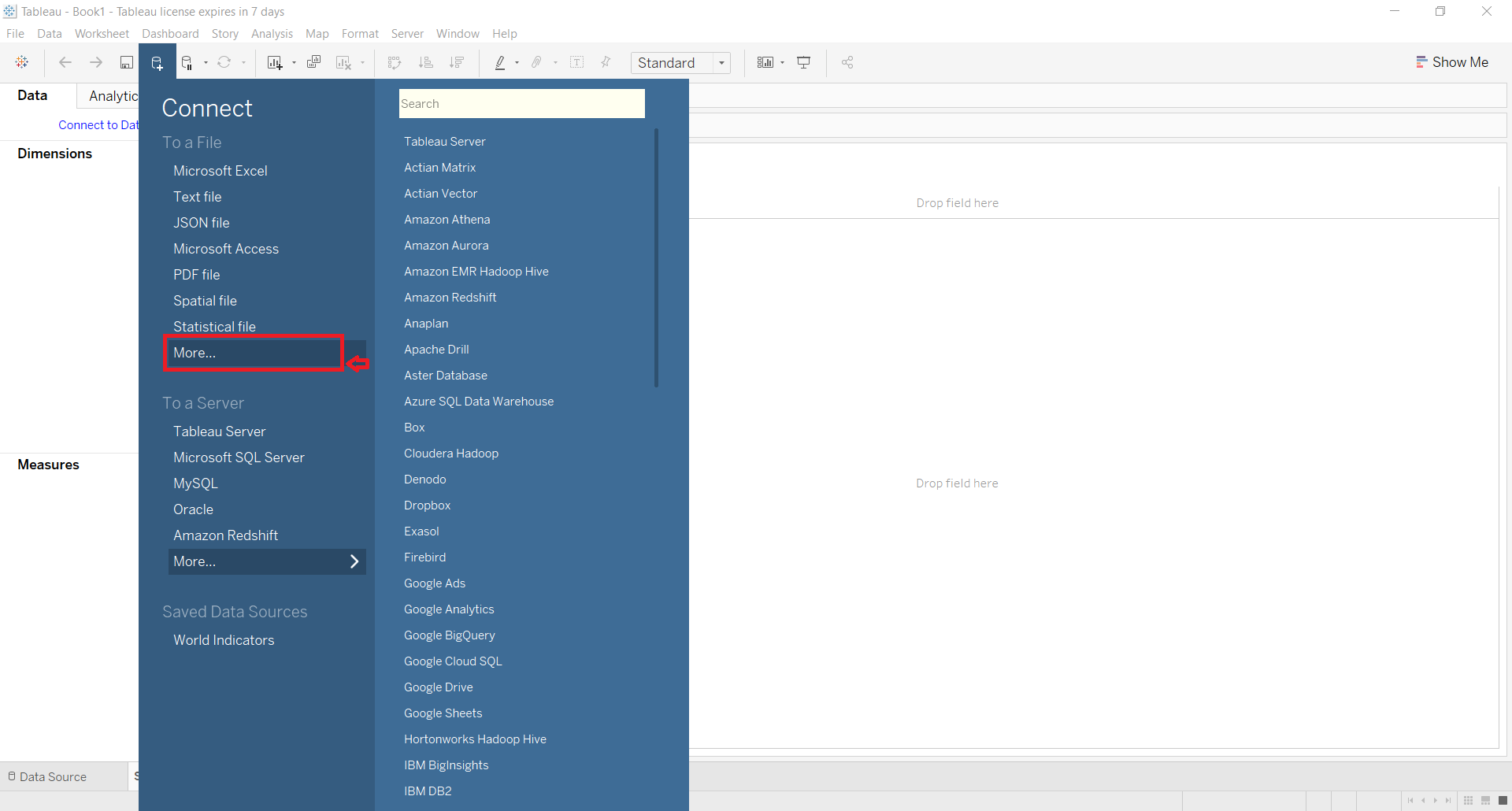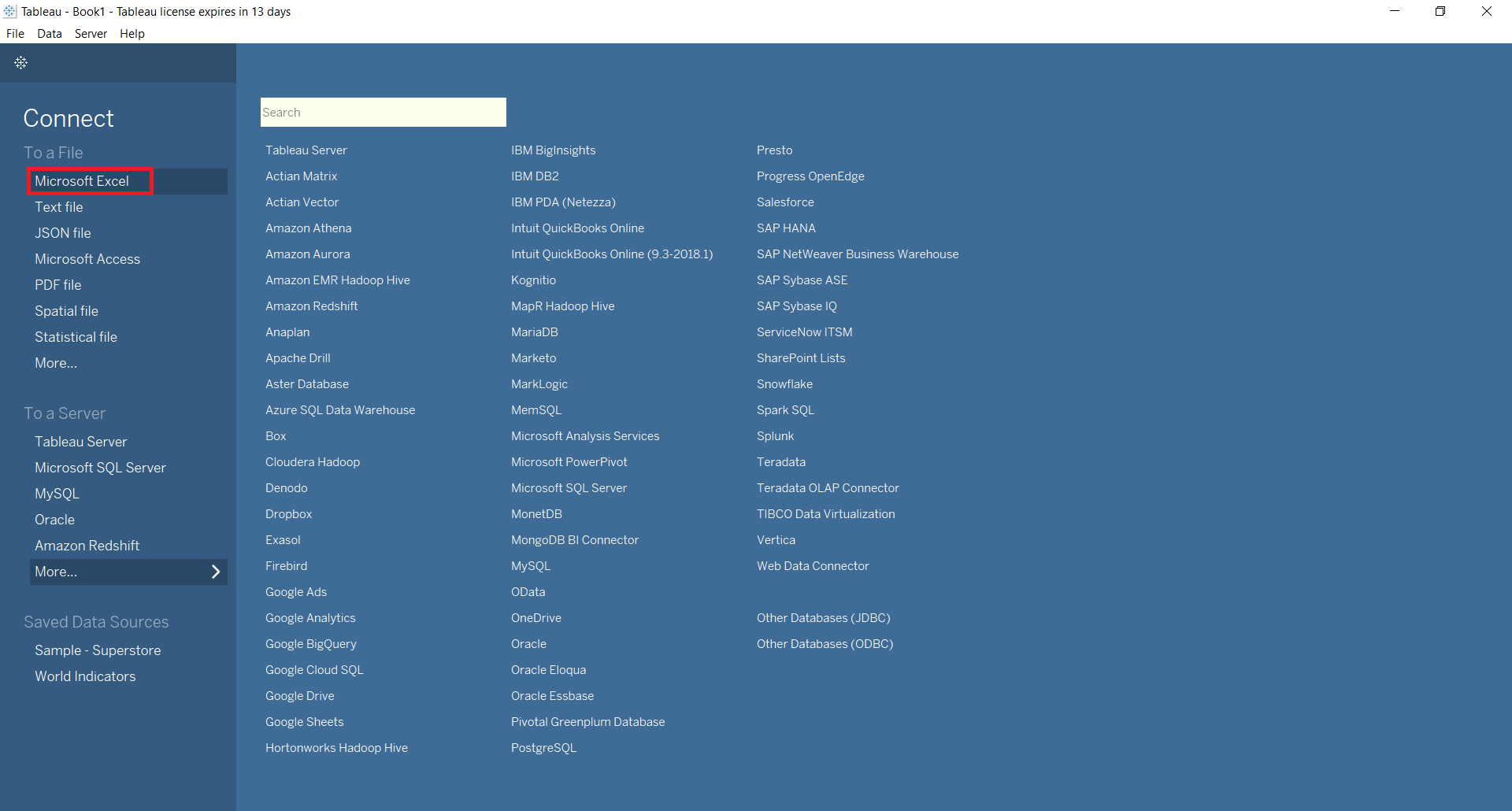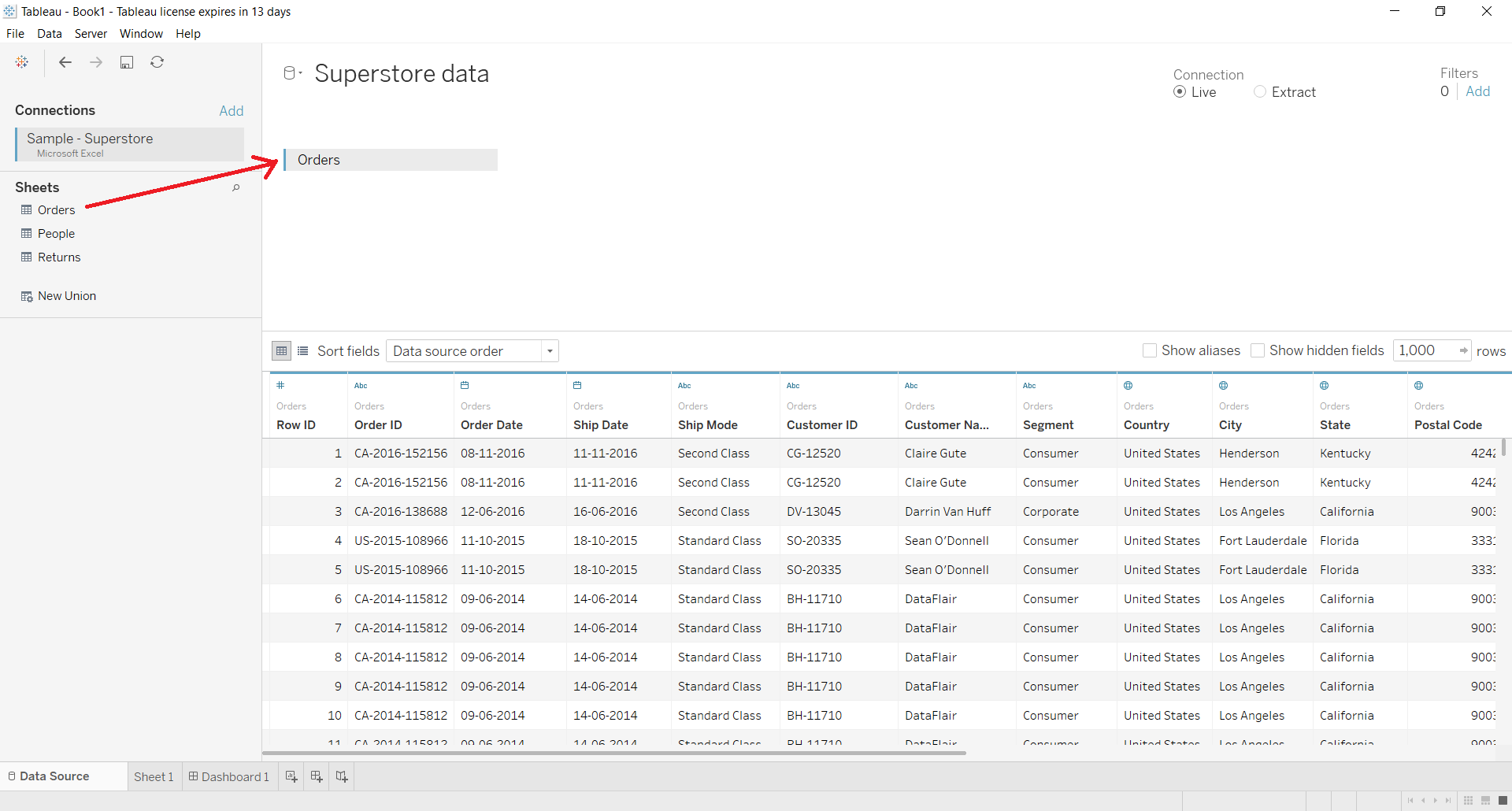Types of Tableau Data Sources with Connection Establishment Process
FREE Online Courses: Your Passport to Excellence - Start Now
In this tutorial, we are going to learn about data sources or data connections in Tableau. We will start with the basics and explore in detail how to make connections with different types of data sources in Tableau. So let’s get started.
Previously, we learned about Tableau Joins. Have you checked it?
Data Sources in Tableau
In order to master any Business Intelligence tool, the most basic operation we need to learn is to connect to a data source. Once we establish a successful connection with a data source, we can access all its data, bring some part of it in Tableau’s repository (extract) and use it for our analysis. Tableau offers a myriad of data sources such as local text files, MS Excel, PDFs, JSON or databases and servers like Tableau Server, MySQL Server, Microsoft SQL Server, etc.
Categorically, there are two types of data sources that you can connect to in Tableau; To a file and To a server.
Connecting to a File
Tableau offers a variety of options to connect and get data from a file in your system. The connection to a file section has file options such as MS Excel, MS Access, JSON, text file, PDF file, spatial file, etc. In addition to this, with the help of the More option, you can access the data files residing in your system and connect them with Tableau.
Ideally, Tableau redirects us to the Tableau repository where our previously saved Tableau workbooks are present. However, you can access other locations on your device to browse more files.
Connecting to a Server
The connection to a server section has countless options for an online data source. Here you will find connectors to different kinds of online data sources such as,
- Server-based Relational Database: Tableau Server, Microsoft SQL Server, Oracle, MySQL, Salesforce, IBM DB, Mongo DB, PostgreSQL, Maria DB, etc.
- Cloud-based Data Sources: Cloudera Hadoop, Google Cloud SQL, Amazon Aurora, etc.
- Web-based Data Sources: Web Data Connector
- Big Data Sources: Google BigQuery
- In-memory Database: SAP HANA
- ODBC and JDBC connections
When you connect to such data sources, you need to provide some basic information such as server name, user name, password specific to that connection. Tableau gives you a range of data connectors based on your subscription and package. In the Connect pane of Tableau, click on More option to explore and use all the available server-based data sources in your Tableau version.
How to Establish a Connection?
Moving on, let us see how do we connect to a data source from Tableau Desktop. We will show you how to establish a connection to an MS Excel file and use its data for analysis in Tableau.
Open Tableau Desktop in your system. As soon as it opens, you will get the Tableau welcome page. On this page, you will find a blue pane on the left with the heading Connect. In this pane, you will find a list of data connectors for file-based and server-based sources. You can click on the data connector name, select a file or establish a connection.
To fetch a Microsoft Excel file, we click on the option Microsoft Excel from the list.
It will open a new dialog box from where you can access files from your system. We have a sample Excel file which we are going to select and click Open.
This will open the contents of the Excel file in a Data Source tab in a Tableau workbook.
This tab has a Connections pane at its left which shows the name of the data source and its contents; that is, the number of sheets in the case of an Excel file.
We can manage and view the contents of a data source by dragging and dropping sheets to the central pane. It will display the entire table with proper rows and columns of the respective sheet.
In addition to this, you can also add a new data source here by clicking on the Add option and then selecting the data file or connector of your choice.
Or, by clicking on the Data tab present on the top-left bar and then selecting New Data Source option from there.
From here, we can sort fields and manage metadata where you can see the names of all the columns present in their concerning tables. In this way, we can also manage multiple linked data sources.
Once we load our data source, we can move on to create a worksheet in Tableau. Open the tab called Sheet1 just next to the Data Source tab and you will find a list of available data sources and fields within it. On the left, there is an organized list of available dimensions and measures from where you can select and use them to create charts and graphs. Just drag and drop dimensions and measures to the Columns and Rows section to start making visualizations.
Every data source, especially server-based sources have different steps to follow in order to establish a connection with. Follow the steps, provide the necessary information and start working with your data in Tableau to carry out the analysis.
Refer to the link given below to check the information requirements for each type of supported data connector given in Tableau.
Supported Connectors – Tableau
Summary
This concludes our tutorial on Tableau data sources. Here, we learned about the two categories of data sources i.e. file-based and server-based. Also, we learned how to connect to a data source by connecting to a sample Excel file. You can try connecting to different data sources in your system.
Next tutorial to explore – Tableau Data Extraction
If you are Happy with DataFlair, do not forget to make us happy with your positive feedback on Google














Why dont you make a free pdf available for these stuff so that they can be downloaded and used for offline reading